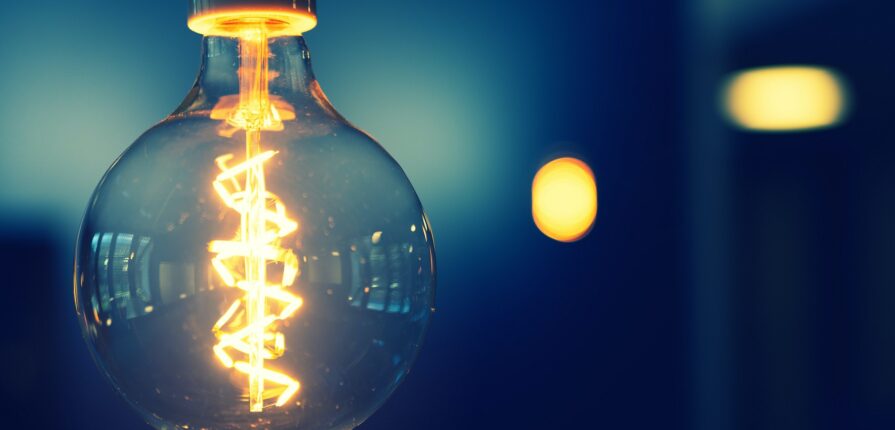With exterior lighting, you need to consider both the intensity (how bright is the beam of light) and the color temperature (what is the tone of light). Both are important factors because they create a different look and feel depending on the settings. For example, a cool light at a very high intensity might do a great job lighting up every single detail, but it will feel stark and overwhelming. On the other hand, a warmer tone at a much lower intensity won’t give the same visibility but will create an ambiance that’s relaxed and welcoming.
Here are some common questions and answers about color temperature for outdoor lighting. The answers are equally applicable to both residential and commercial exterior lighting.
For exterior lighting, what are the color temperature options?
Modern exterior lighting systems use LED bulbs; if someone tries to set you up with incandescent bulbs in an outdoor lighting system, you should run away screaming. (Or, at the very least, making a kind of disgruntled huffing noise.) Incandescent bulbs have had their day. LED bulbs are more efficient, cooler, less attractive to insects, and they come in a perfect range of color temperatures:
- 2700K Warm White: warm white creates illumination that appears romantic, cozy, and welcoming.
- 3000K Natural White: the lighting color temperature preferred by many professional landscape designers. The cooler tone accentuates greens and blues in vegetation.
- 4000K Cool White: the coolest of all the whites, the best choice for moonlighting, and usually the lowest you will see in security floodlights.
Should outdoor lighting be warm or cool?
The thing to remember with outdoor lighting is that each fixture has its own purpose. So there is not a single correct answer to this question. Instead, the “best answer” is to ask another question: what is the purpose of this lighting?
Of course, visibility is the basic purpose for lighting. But is the lighting meant to create comfortable visibility and warm ambiance for an outdoor living space, or to illuminate a large area for logistical or security purposes? Those are very different types of visibility.
For the former, a comfortable glow, you’d choose a warm color temperature to provide the right ambiance. For the latter, you’d probably go with a cool tone to create stark illumination.
How do I choose an exterior light color?
One way to choose a good exterior light color is to imagine what color temperature you would use in a similar interior space. A basement storage room might have brighter, cooler bulbs to provide maximum visibility. There’s no need to consider ambiance or set the mood; you’re not hanging out in the storage room. You want to see details clearly and retrieve what you’re looking for in all those boxes and totes. So a similar setting in an outdoor space — for example, a workshop or garage — might benefit from a brighter, cooler light.
What is the best color temperature for patio lighting?
A warm color temperature is generally best for patio lighting. Warm lights feel welcoming and homey, which is typically the kind of mood you want to have with patio lighting. Go with a 2700K temperature for outdoor areas like a patio or deck where you’ll gather and relax.
What is the best bulb color for porch light?
Porch lights, like patio or deck lights, are typically better with a warm color temperature. A warmer color emits a gentle, welcoming glow. It’s a good look for a porch. If you want to create more light without making an individual light brighter, try adding more fixtures.
What is the best bulb color for security lighting?
Security lighting needs to be very bright and provide a high level of visibility. 4000K is a great choice for residential security lighting, as it gives the cool white brightness but is not quite as harsh as commercially used security lights.
How much kelvin for outdoor lights?
For LED outdoor lights, you can choose from this range: from 2700K (warm white) to 3000K (natural white) to 4000K (cool white). While there’s always room for customization and personal preferences, in general, we find that warm white is best for the “close to home” lights, like patios, porches, decks, and walkways. Natural white is often a great pick for landscape lighting that highlights natural features and trees. And cool white works well for security lighting.
Should a lamp post light be warm or cold white?
You can use warm or cool white color temperature for a lamp post light. If the light is meant to be a brighter, security type of light, you might want to choose the more stark cool white, with an intense beam and a wider spread. If the lamp post light is meant to be a kind of beacon (e.g., at the end of the driveway or sidewalk), then a warmer white is a better choice.
See our article on how to choose the right color temperature for outdoor lighting, or get in touch for expert help with all your St. Louis outdoor lighting needs.

